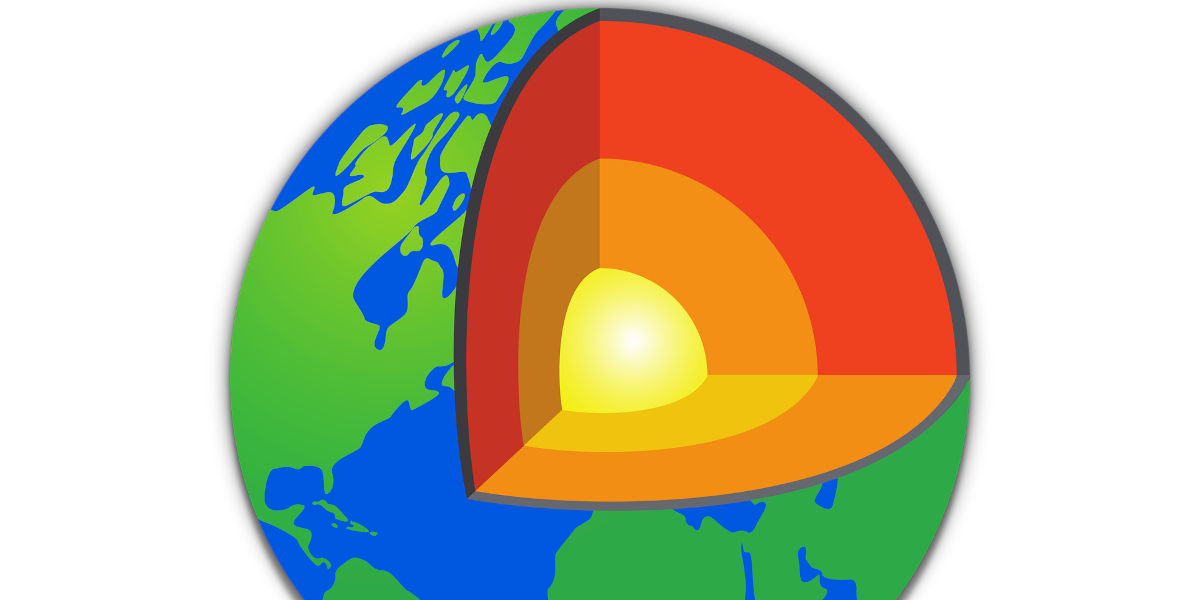Earth's crust, the outermost solid shell of our planet, plays a vital role in the evolution of life and the dynamics of Earth's geology. From the highest mountains to the deepest oceans, it wraps our planet in a variety of landscapes, presenting a multitude of mysteries, one of the most intriguing being where is the earth crust the thinnest? This article will delve into the depths of understanding earth's crust, revealing its structure, the force driving its change, and finally, where our planet's skin is at its thinnest and why that matters.
Earth's Crust: Unveiling the Outermost Layer
The journey to the center of the Earth begins at our feet. The crust under our feet, beneath which lie multiple layers of our planet - the mantle, outer core, and inner core. The thickness of the Earth's crust varies dramatically; ranging from about 5 kilometers under the oceans (oceanic crust), to up to 70 kilometers in mountainous areas (continental crust). So, where is the Earth crust the thinnest and why is it so? Let's dive into the heart of the matter.
Earth's Crust and Plate Tectonics: The Catalyst of Change
Earth’s crust is not a singular, unbroken shell, but rather is broken into multiple large pieces known as tectonic plates. This forms the basis for the theory of plate tectonics, the fundamental process driving change in Earth’s crust structure. These plates - giant puzzle-like pieces - glide atop the semi-fluid layer of the mantle beneath, colliding, pulling apart, or grinding past each other. This movement often results in some of Earth's most impressive phenomena, including earthquakes, volcanic eruptions, and the formation of mountain chains and ocean trenches.
Let's now use this understanding of Earth's crust and plate tectonics to explore where Earth's crust might be at its thinnest. After all, it stands to reason that if the thickness of the crust varies, this implies the existence of regions where it is minimal. Hence, allowing us to answer the question - where is the earth crust the thinnest?
As we continue our journey to the center of the earth, we delve into the statistics and science behind our planet's thin crusts. One of the most fascinating aspects of our planet’s structure is its disparity in thickness. Often compared to an eggshell against the size of the egg, the earth's crust is surprisingly thin, accounting for less than 1% of the earth's volume. The reason behind this is that the earth's crust has been continually recycler over billions of years by a process called plate tectonics.
Generally speaking, the Earth's crust tends to be thickest beneath mountain ranges, where the process of plate collision has pushed the crust upwards and created a thick root of buoyant material beneath. Conversely, it tends to be thinnest beneath the oceanic plates, where new crust is constantly being formed at mid-ocean ridges and then recycled back into the mantle at subduction zones.
Oceanic Crust Vs Continental Crust
The Earth's crust actually comes in two distinct types: Oceanic and Continental. Oceanic crust is formed at sea-floor spreading centers, which are sites where magma rises to the Earth's surface, creating new crust. This type of crust is usually about 5km to 10km thick and composed primarily of denser material like basalt. On the other hand, Continental crust is much older and composed of less dense materials such as granite. Its thickness varies quite significantly, averaging around 35km but can extend up to 70km beneath mountain ranges.
The Thinnest Part of the Crust
While it's clear that the thickness of our planet's crust varies, where is it thinnest? The part of the Earth's crust which is the thinnest is known as the "oceanic crust". The answer to this question can be found in the remote parts of the Pacific Ocean. More specifically, in some areas near the East Pacific Rise, the Earth's crust is only about 1km thick, making it the thinnest crust on Earth. This is thin enough to be able to measure seismic waves traveling directly from one side of the planet to the other!
Significance and Future Studies
Understanding the thickness of Earth's crust is critically important for many areas of geoscience. Not only does this knowledge aid geologists in understanding past and current Earth’s geological activity, but it also feeds into studies of plate tectonic movements, seafloor spreading, and the composition and evolution of the planet. As technology advances, the precision of our measurements will improve, providing even more depth to our understanding of Earth's remarkable crust.
As our journey to the center of the Earth concludes, we are again reminded of the fascinating complexity and remarkable beauty of our planet. Even the thinnest of structures, like our planet's crust, hold fundamental importance and inspire further scientific exploration.




